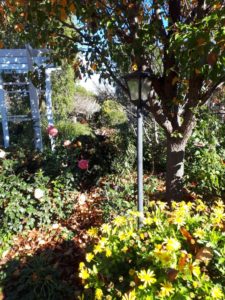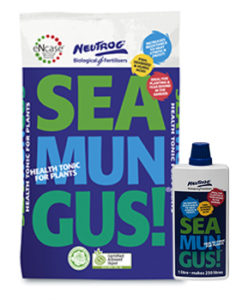
Delving into the activity of soil microbes in autumn, we find that the biological activity of soil microbes is driven by the same factors that influence plant growth, moisture, temperature and nutrients.
In summer when the soil moisture drops and temperature of soils is high, microbial activity slows down. In your garden, this means the breakdown of organic material and nutrient cycling slows down. The residual effect is a reduction in nutrient availability for your plants.
Autumn is a great time for soil and plants to recover from summer stress, as the soil temperature drops and there is an increase in moisture. It’s important to remember when working with biological systems such as soil microbes, what you do in autumn and winter can have a marked influence in the coming spring, as microbe activity in autumn stabilises nutrients ready for plants in spring.
So how do start your soil and plant recovery program?
The great thing is that microbes reproduce very quickly under the right conditions. Some bacteria can double their numbers every 9 minutes in a lab. It generally takes a little longer in the soil, however you can expect a very quick turnaround from an almost dead soil to one teeming with microbes.
Bacteria and fungi need the same nutrients that plants do – nitrogen, phosphate, potassium and micronutrients. If you’ve spread Whoflungdung, then your soil has a fair smattering of these already, however if you’ve used other sources of mulch (especially some of the garden mulches made of ground-up green waste) your soil is more than likely lacking these nutrients, so applying Neutrog’s Seamungus will add them to the soil.
Seamungus is slightly different to other organic fertilisers – it’s more of a soil conditioner that naturally contains essential nutrients for plants and microbes, as well as humic material. Humics do a great job of holding onto micronutrients, which often leach away. As rains begin to increase, the chance of nutrient runoff escalates, and this should be avoided. My own block is sloping and the last thing I want is those nutrients in the local waterways. Furthermore, Seamungus provides those microbes the essential carbon to grow and multiply, and carbon is the energy source for microbes. So using your compost or mulch together with Seamungus results in a rapid increase in microbial activity in autumn soils, and your plants in spring will benefit.
🌿 About Seamungus – Seamungus is a soil and plant conditioner, manufactured by combining the very best of composted raw materials – seaweed, fish, humic acid and manure. It is also a health tonic and planting food for all plants including natives, lawns and bare-rooted roses. Seamungus undergoes a unique composting process, specifically developed to stabilise the nutrients, maximise nutrient availability and to ensure the product is free of any parasites, pathogens and weed seeds.
Most importantly, the resultant product retains the microbiology necessary for a ‘living’ product. Whilst Seamungus contains a wide range and good levels of plant nutrients, it is perhaps the additional unique properties contained within seaweed that provide the catalyst for providing higher yields of sustained quality. Seamungus will help your plants resist heat, drought and frost, along with pests and disease. It will retain up to 70% of its own weight in moisture – significantly increasing the soil’s ability to hold onto water and nutrients.

